Share
Debt consolidation benefits: Lower rates, simpler payments, faster payoff. Complete guide to methods, savings & choosing the right option.
If you’re juggling multiple loan repayments and feeling weighed down by high interest costs, debt consolidation could be a strategy that helps transform your financial situation. Managing several debts with different payment dates, interest rates, and minimum amounts can be both stressful and expensive, leaving many Australians looking for a more manageable solution.
The numbers tell a compelling story about debt consolidation’s popularity in Australia. Debt consolidation is the main reason most Australians apply for a personal loan, according to data from Money.com.au. More than half (51.92%) of all loan applications are for consolidating debt, with the average loan amount being $15,302. This widespread adoption reflects the real benefits that debt consolidation can offer when used appropriately.
Debt consolidation works by combining all your existing debts into one manageable loan, potentially helping you simplify your finances, lower your interest rate, and pay off your debts faster. However, while the benefits can be significant, it’s important to assess whether debt consolidation is the right strategy for your specific circumstances and understand both the opportunities and risks involved.
Understanding debt consolidation: What it is and how it works
Debt consolidation is the process of combining multiple debts into a single new loan with unified terms and repayment structure. The power of consolidation is simplifying your debts. One payment, at one interest rate, is paid once a month. Instead of managing several different creditors, interest rates, and payment schedules, you streamline everything into one monthly commitment.
The process typically involves taking out a new loan for the combined amount of all your existing debts, then using those funds to pay off your individual creditors. This leaves you with just one loan to manage, ideally at a lower interest rate than the average of your previous debts.
You can consolidate a wide range of debts through this process. Common debts suitable for consolidation include credit cards, personal loans, store cards, car loans, and even some utility bills or tax debts. The goal is to streamline your finances, reduce the complexity of multiple payments, and potentially save money on interest charges over time.
Different consolidation methods are available depending on your circumstances, credit profile, and the types of debt you’re managing. These range from unsecured personal loans to using home equity through refinancing, each with distinct advantages and considerations that we’ll explore in detail.
The primary benefits of debt consolidation
Lower interest costs and potential savings
One of the most significant benefits of debt consolidation is the potential to reduce your overall interest costs substantially. Credit cards, in particular, often carry interest rates exceeding 20%, while other forms of unsecured debt can also be expensive. Debt consolidation loans will often incur lower interest rates compared to your existing debts, helping you to save in the long term.
The mathematics of interest rate reduction can be compelling. Understanding the pros and cons of personal loans helps determine if this consolidation method suits your situation. Instead of paying the average credit card interest rate of 19.94%, two times, you can apply for a personal loan with a lower fixed interest rate. Personal loan rates for debt consolidation can start from as low as 5.76% p.a., representing potential savings of 14% or more compared to typical credit card rates.
These interest savings translate into real money in your pocket each month and over the life of your debts. For example, if you’re paying $500 monthly across various high-interest debts, consolidating to a lower-rate personal loan might reduce your payments to $400 monthly while also reducing the total amount you’ll pay over time. Vehicle owners should also consider car loan refinancing as part of their debt optimization strategy.
The fixed-rate nature of most consolidation loans also provides certainty that variable-rate credit cards cannot offer. You’ll know exactly how much you’re paying each month and when your debt will be fully repaid, making financial planning much more straightforward.
Simplified repayments and reduced financial stress
Managing multiple debts with different payment dates, minimum amounts, and terms creates complexity that can lead to missed payments and additional stress. Debt consolidation addresses this complexity directly by creating a single, predictable monthly payment.
You will have one monthly repayment to make, one lender to deal with, one set of fees to track and one rate of interest to remember. This simplification reduces the mental load of debt management and significantly decreases the risk of accidentally missing payments due to confusion or oversight.
The psychological benefits of simplified debt management shouldn’t be underestimated. Many people report feeling more in control of their finances after consolidation, even before seeing the numerical benefits. Having a clear picture of exactly when you’ll be debt-free, rather than making minimum payments indefinitely, provides motivation and peace of mind.
Simplified repayments also reduce the risk of late fees and penalties that can accumulate when managing multiple accounts. Missing just one payment across several accounts can result in substantial fees and damage to your credit score, costs that are avoided with a single consolidation loan.
Improved budgeting and financial planning
Debt consolidation creates a structured repayment plan that makes budgeting significantly easier. Credit card debt consolidation loans offer more structure. One of the main benefits of a credit card refinance is that it brings structure to your debt. Unlike credit cards where minimum payments can fluctuate and the payoff timeline is uncertain, consolidation loans provide fixed monthly payments and clear end dates.
This structure enables better financial planning because you know exactly how much of your income will go toward debt repayment each month. You can plan other financial goals around this fixed commitment, whether that’s building an emergency fund, saving for a holiday, or planning major purchases.
The visibility that comes with consolidation also helps identify areas where you can potentially accelerate debt payoff. With a clear understanding of your interest rate and remaining balance, you can easily calculate the impact of extra payments and see how additional contributions will reduce both the total interest paid and the time to become debt-free.
Potential credit score improvements
Debt consolidation can positively impact your credit score through several mechanisms, though the timing and extent of improvement varies by individual circumstances. The most immediate benefit comes from reducing your credit utilisation ratio by paying off credit card balances with the consolidation loan.
Credit utilisation – the percentage of available credit you’re using – is a significant factor in credit score calculations. By paying off credit cards through consolidation, you reduce this ratio, which can improve your credit score relatively quickly. The key is keeping those credit cards open but unused to maintain your available credit while showing lower utilisation.
Having control over one debt, instead of juggling multiple repayments can help to improve your credit rating by avoiding inadvertently missed payments. The simplified payment structure reduces the risk of missed payments, and consistent on-time payments are the most important factor in maintaining and improving your credit score over time.
However, it’s important to note that applying for a new consolidation loan will initially result in a credit inquiry, which may temporarily reduce your credit score. This short-term impact is typically outweighed by the longer-term benefits of better debt management and reduced credit utilisation.
Types of debt consolidation methods
Personal loan consolidation
Personal loans represent the most common method of debt consolidation for unsecured debts. These loans are specifically designed to combine existing debts into a single, more manageable payment with a structured repayment schedule. Personal loan interest rates are often lower than other forms of debt (like credit cards). This saves you money. Most lenders offer personal loans for debt consolidation with borrowing amounts typically ranging from $2,000 to $55,000, depending on your income and creditworthiness.
Personal loan terms for debt consolidation usually range from one to seven years, allowing you to choose a timeframe that balances affordable monthly payments with reasonable total interest costs. You can also swap your variable rate for a personalised fixed interest rate for added ease, providing certainty about your monthly obligations.
The application process for personal loan consolidation is typically straightforward and can often be completed online. Many lenders can provide same-day approval and funding, allowing you to quickly pay off existing debts and begin your simplified repayment schedule. Unsecured personal loans don’t require collateral, making them accessible to renters and homeowners alike.
Home loan debt consolidation and refinancing
For homeowners with sufficient equity, using your home loan for debt consolidation can offer significant advantages. Increase your Westpac home loan to consolidate personal debts, such as credit card, personal loan and car loan, into an easier, single repayment. This method typically provides access to the lowest interest rates available for debt consolidation.
Equity is your property value minus what you still owe on your home loan. If you have sufficient equity, you can refinance your mortgage for a higher amount and use the additional funds to pay off other debts. Since mortgage rates are typically much lower than personal loan or credit card rates, this can result in substantial interest savings.
The process involves either refinancing your existing home loan with additional borrowing or increasing your current loan limit with your existing lender. Consolidating debt through home loan refinancing means rolling all your existing debts into a single mortgage, creating one monthly payment that covers both your home and the consolidated debts.
However, this method does require careful analysis of the risks. You’re converting unsecured debt into secured debt, meaning your home becomes collateral for debts that previously couldn’t threaten your housing security. Additionally, extending shorter-term debts over a 25-30 year mortgage term might increase total interest costs despite the lower rate.
Balance transfer credit cards
Balance transfer credit cards offer another consolidation option, particularly suitable for credit card debt. These products allow you to transfer existing credit card balances to a new card, often with a promotional 0% interest rate for an introductory period.
The promotional periods on balance transfer cards typically last between 12 and 34 months, during which time you pay no interest on the transferred balances. This can provide significant savings if you can pay off the debt during the promotional period. However, after the promotional rate expires, the interest rate usually increases to the card’s standard rate, which may be higher than other consolidation options.
Balance transfers work best when you have a clear plan to pay off the debt during the promotional period and the discipline to avoid accumulating new debt on the cleared credit cards. Some balance transfer cards also allow you to transfer other types of debt, such as personal loans, though this feature isn’t universal.
The key to success with balance transfer consolidation is ensuring you can realistically pay off the debt before the promotional rate ends and avoiding the temptation to accumulate new debt on your existing credit cards.
Real-world examples and calculations
Understanding the practical impact of debt consolidation becomes clearer through specific examples that demonstrate potential savings. Let’s examine a typical scenario that illustrates how consolidation can reduce both monthly payments and total interest costs.
May’s debt consolidation success story: Sarah, a nurse from Perth, had three debts: a $5,000 credit card at 22% interest with $150 monthly minimum payments, an $8,000 personal loan at 15% interest with $200 monthly payments, and a $3,500 car loan at 12% interest with $120 monthly payments. Her total monthly debt payments were $470, and she was paying an average interest rate of approximately 16.3% across her debts.
Paula consolidated these debts into a $16,500 personal loan at 10% interest over four years, reducing her monthly payment to approximately $420. This represented a monthly saving of $50 while providing a clear payoff timeline. More importantly, the total interest paid over the life of the loan was significantly reduced compared to maintaining the separate higher-rate debts.
This works out to be $30 a month cheaper and would save you $737 overall in a similar example from research data. The exact savings depend on the specific debts being consolidated, the new interest rate achieved, and the chosen loan term.
Nathan, a tradesman from Melbourne, had sufficient home equity and consolidated his debts into his mortgage at 6% interest. His monthly payment reduction was larger than Sarah’s personal loan consolidation, though he needed to weigh this against the longer loan term and the conversion of unsecured debt to secured debt.
Important considerations and potential risks
When debt consolidation may not be suitable
While debt consolidation offers significant benefits for many people, it’s not a universal solution. Debt consolidation (or refinancing) can make it easier to manage your repayments. But it may cost you more if the interest rate or fees (or both) are higher than before. Careful analysis of your specific situation is essential before proceeding.
Debt consolidation may not be worthwhile if you can’t qualify for an interest rate lower than what you’re currently paying on average. This situation sometimes occurs for people with poor credit scores, who may only qualify for consolidation loans at rates similar to or higher than their existing debts.
The loan term chosen for consolidation also significantly impacts the total cost. While a longer loan term reduces monthly payments, it may increase the total interest paid over the life of the loan. For example, consolidating $20,000 of debt from a 5-year average term to a 7-year consolidation loan might reduce monthly payments but increase total interest costs.
Some debts may also carry favourable terms that make consolidation disadvantageous. For instance, if you have a low-interest car loan or a promotional-rate credit card, including these in a higher-rate consolidation loan would increase your costs rather than reduce them.
The discipline factor
You could also get deeper into debt if you get more credit, as it may tempt you to spend more. This risk represents one of the most significant dangers of debt consolidation. Paying off credit cards with a consolidation loan can create the illusion of financial improvement while actually making the situation worse if new debt is accumulated.
The psychological relief of simplified payments and lower monthly obligations can sometimes lead to relaxed spending discipline. When credit cards are paid off through consolidation, they become available for new spending, potentially doubling your debt burden if not managed carefully.
Successful debt consolidation requires a commitment to addressing the underlying spending behaviours that created the debt problem initially. This might involve creating and sticking to a budget, building an emergency fund to avoid future borrowing, or even closing some credit accounts to remove temptation.
Creating sustainable financial habits is crucial for long-term success. Debt consolidation provides an opportunity to reset your financial situation, but it only works if accompanied by improved money management practices.
Costs and fees to assess
Debt consolidation involves various costs that must be factored into the overall analysis of whether consolidation will save money. Personal loans typically carry establishment fees ranging from $0 to $500, plus potential ongoing monthly fees. These costs need to be weighed against the interest savings to determine the net benefit.
Home loan consolidation through refinancing involves more substantial costs, including application fees, valuation fees, legal costs, and potentially Lenders Mortgage Insurance (LMI) if your loan-to-value ratio exceeds 80%. If debt consolidation pushes your LVR over 80%, LMI costs extra, which can amount to thousands of dollars and significantly impact the cost-effectiveness of consolidation.
Existing loans may also charge exit fees or early repayment penalties when paid off through consolidation. These costs vary by lender and loan type but can be substantial for some personal loans and fixed-rate products. It’s important to obtain a complete picture of these costs before proceeding with consolidation.
Government charges also apply to some types of debt consolidation. For example, mortgage refinancing may involve state government charges for registering the new mortgage, though stamp duty typically isn’t payable on refinancing for the same amount.
Choosing the right consolidation method
Assessing your debt situation
The first step in effective debt consolidation is conducting a comprehensive audit of your current debts. You might want to start by listing all debts you have. Note down the outstanding amounts, repayment amounts, interest rates on each and repayment frequency of each debt. This analysis provides the foundation for determining whether consolidation will provide genuine benefits.
Calculate your total monthly debt payments, average interest rate, and the timeframe for paying off each debt at current payment levels. This information allows you to compare consolidation options against your current situation and identify the most beneficial approach.
Evaluate not just the mathematical benefits but also the complexity of your current situation. If you’re struggling to keep track of multiple payment dates and frequently incur late fees, the organisational benefits of consolidation may justify proceeding even if the interest savings are modest.
Examine your spending patterns and the reasons your debts accumulated. If debt resulted from a temporary financial setback and your income has since stabilised, consolidation can provide a clear path forward. However, if ongoing spending exceeds income, consolidation alone won’t solve the underlying problem.
Qualification requirements
Different consolidation methods have varying qualification requirements that influence which options are available to you. Personal loan consolidation typically requires stable employment, adequate income to service the new loan, and a reasonable credit score. Most lenders prefer credit scores above 650, though some specialist lenders work with lower scores at higher interest rates.
Home loan consolidation requires sufficient equity in your property, typically at least 20% to avoid LMI costs. Lenders usually prefer you to have 20% equity. This is an LVR of 80% or less. You’ll also need to meet standard mortgage lending criteria, including income verification and debt-to-income ratio requirements.
Your employment type and income stability significantly influence qualification and interest rates offered. Permanent employees typically receive the best rates, while casual workers or self-employed borrowers may face higher rates or additional documentation requirements.
Existing payment history on your current debts also impacts qualification. Recent missed payments or defaults may limit your options or result in higher interest rates, even if your current financial situation has improved.
Comparing lenders and products
Not all debt consolidation products are created equal, making thorough comparison essential for achieving the best outcome. Look beyond headline interest rates to assess the total cost of each option, including fees, charges, and loan features that may benefit your situation.
Compare the total cost over the full loan term rather than just monthly payment amounts. A slightly higher interest rate with lower fees might be more cost-effective than a low-rate loan with substantial establishment and ongoing charges. Evaluate loan features that provide flexibility for your changing circumstances. Options like extra repayments without penalty, redraw facilities, or the ability to make weekly or fortnightly payments can enhance the value of a consolidation loan and help you pay off debt faster.
Assess the lender’s customer service and online capabilities, particularly if you value easy account management. Some lenders offer superior digital platforms and customer support that can make ongoing loan management more convenient.
Making debt consolidation work long-term
Post-consolidation financial management
Success with debt consolidation extends far beyond simply obtaining the loan and paying off existing debts. The months and years following consolidation are crucial for ensuring you achieve lasting financial improvement rather than simply delaying debt problems.
Create a comprehensive budget that allocates the money previously spent on multiple debt payments toward your single consolidation payment, emergency fund building, and other financial goals. The simplified payment structure makes budgeting easier, but you still need to actively manage your spending to avoid accumulating new debt.
Refinancing to consolidate your debts is one thing, but it’s important to make sure you’re addressing the issue at the root of the problem. If you have poor spending habits, you could find yourself in the same situation down the track, but with even more debt. Use the consolidation as an opportunity to develop better financial habits rather than simply solving a short-term payment problem.
Build an emergency fund to avoid future borrowing for unexpected expenses. Even a small emergency fund of $1,000-2,000 can prevent minor financial setbacks from derailing your debt consolidation progress and forcing you back into high-interest debt.
Strategies to pay off consolidated debt faster
Once you’ve consolidated your debts, focus on strategies to pay off the new loan as quickly as possible while still maintaining financial stability. Making extra payments toward the principal balance reduces both the total interest paid and the time to become debt-free.
Use windfall gains wisely, like for a lump sum payment on your mortgage. Target the consolidated debt part of your loan and look to clear it sooner. Tax refunds, bonuses, or other unexpected income provide excellent opportunities to accelerate debt reduction.
Examine increasing your payment frequency from monthly to fortnightly or weekly if your lender allows. This strategy results in 26 fortnightly payments per year instead of 12 monthly payments, effectively making an extra month’s payment annually and reducing interest costs.
If your financial situation improves, resist the temptation to reduce payments or extend the loan term. Instead, maintain or increase payments to capitalise on the improved cash flow and accelerate your journey to debt freedom.
Debt consolidation offers genuine benefits for many Australians struggling with multiple debts, from substantial interest savings to the psychological relief of simplified financial management. Save money. By rolling all your debts into one account, you’ll be paying one fee and one interest rate. This will likely reduce how much you’re paying for fees and interest. The opportunity to reduce monthly payments while creating a clear path to debt freedom makes consolidation an attractive strategy for achieving financial stability.
However, successful debt consolidation requires more than simply obtaining a new loan. It demands honest assessment of your financial situation, careful comparison of available options, and most importantly, commitment to addressing the spending behaviours that created the debt problem initially. The temporary relief of lower payments means nothing if new debt accumulates alongside the consolidation loan.
The key to long-term success lies in viewing debt consolidation as a tool for financial reset rather than a permanent solution. Use the simplified payment structure and potential interest savings as an opportunity to build better financial habits, create an emergency fund, and develop sustainable spending patterns that prevent future debt accumulation.
Whether you choose personal loan consolidation, home loan refinancing, or another method depends on your specific circumstances, credit profile, and financial goals. The important step is taking action to regain control of your finances rather than continuing to struggle with multiple high-interest debts that compound your financial stress.
Professional financial advice can provide valuable guidance in assessing your options and choosing the most appropriate consolidation strategy for your situation. Don’t let pride or embarrassment prevent you from seeking help – financial counsellors and mortgage brokers regularly assist people in similar situations and can provide objective analysis of your best path forward.
Take control of your financial future by honestly assessing your debt situation, exploring your consolidation options, and committing to the disciplined approach necessary for lasting financial improvement. The benefits of debt consolidation are real and achievable, but only when combined with the commitment to better financial management that prevents future debt problems.
Further questions
What types of debt can I consolidate in Australia?
How much can I save with debt consolidation?
Will debt consolidation affect my credit score?
Should I use my home loan to consolidate other debts?
What happens if I can't qualify for debt consolidation?"
This is general information only and is subject to change at any given time. Your complete financial situation will need to be assessed before acceptance of any proposal or product.





